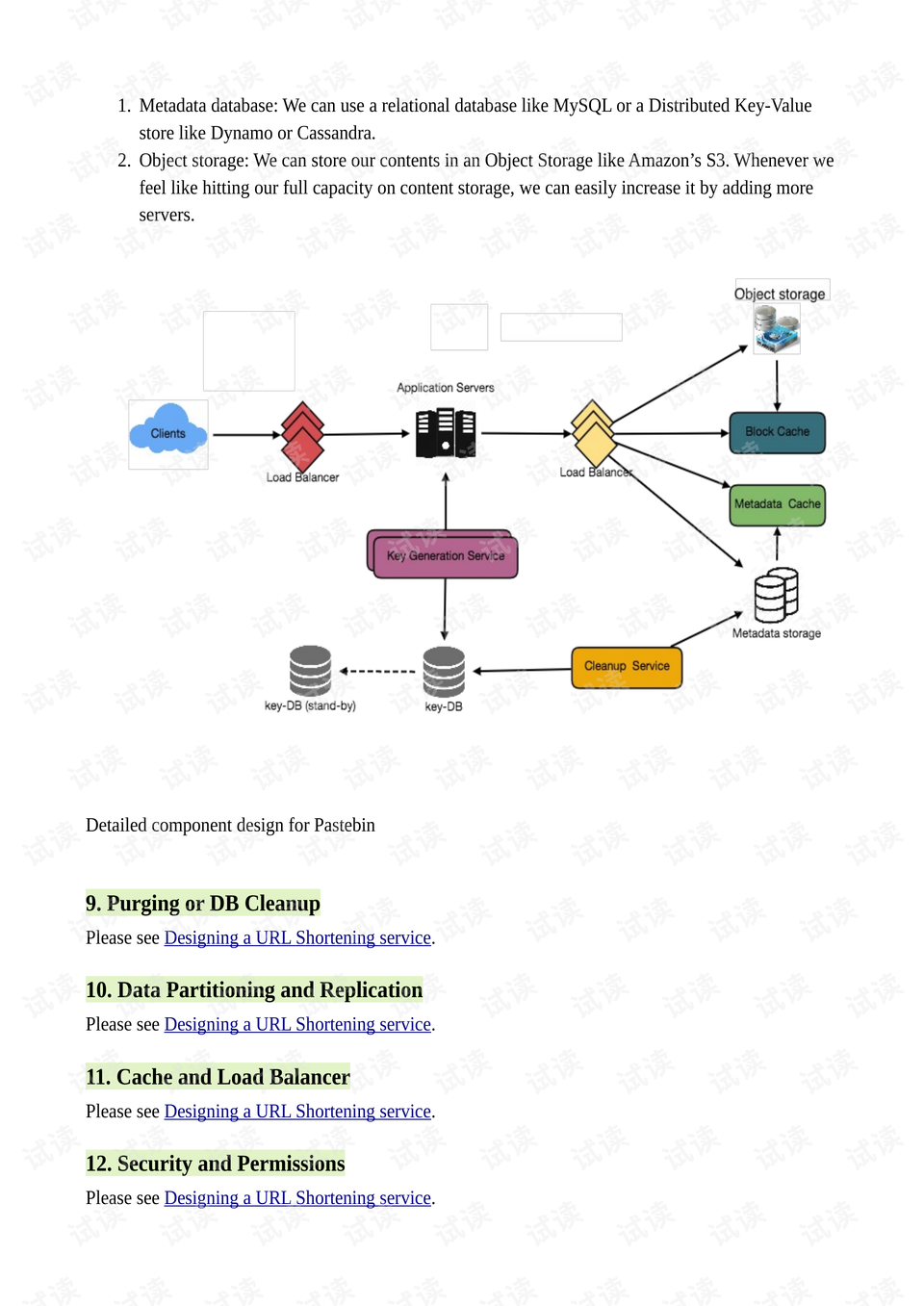Table Of Content

Sometimes this means you’ll be up against an Advanced System Design (ASD) interview. Your interviewers will ask you more focused questions based on improving/optimizing your high-level designs. During these interviews, you’ll be tasked with designing objects and classes. These require a more programming-centric approach and are used to better understand your coding abilities.
How are SDIs different from other interviews?
Data consistency is important to maintain the order of messages across different nodes. Availability is crucial to provide real-time messaging capabilities to users. When tackling this problem, scalability is again a critical consideration. The system should be able to handle a high volume of ride requests and match them with available drivers in real-time. Fault tolerance is important to ensure that the service remains reliable even if there are issues with individual drivers or server failures. Data consistency is essential to maintain accurate records of rides and payments.
Common System Design Interview Questions
Designing a system involves collaborating with various stakeholders, including product managers, developers, and operations teams. Engineers must effectively communicate their ideas, explain complex concepts, and justify their design choices. It involves designing and implementing complex software systems, ensuring they are scalable, reliable, and performant. System design interviews assess a candidate's ability to solve real-world problems by designing system architectures. System design interviews have become an integral part of the hiring process in the tech industry. As companies strive to build scalable and efficient systems, they are seeking candidates who possess strong system design skills.
The Complete Toolkit for Grokking Modern System Design
Service-Oriented Architecture (SOA) is another widely used methodology that emphasizes designing systems as a collection of loosely coupled services. Each service performs a specific function and communicates with other services through well-defined interfaces. — If you are looking to learn System Design in depth, then you can also check out this list of best System Design Courses to build your foundations and fill gaps in your understanding.
You will learn to translate these principles to practical application and compare different elements to mix and match a custom solution for any design problem. As a company grows, its needs may change, so real-world system building is often an iterative process to provide space for continual growth. For Twitter, at a high-level, we will need multiple application servers to serve all the read/write requests with load balancers in front of them for traffic distributions.
Capacity estimation calculations (sometimes called back of the envelope calculations) can be somewhat daunting given the amount of mental math they require. One of the biggest tips I have for this part of an SDI is to make it easy on yourself and purposefully use nice, round numbers. Otherwise, you’ll just waste time doing grade school math in front of your interviewer. By walking through the aspects of System Design in RESHADED, we can determine the areas where a strong-hire candidate communicated the right technical information at the right time. To read more about different engineering levels, how they approach an SDI, and developing soft skills for the SDI, please check out our new, free course, The System Design Interview Prep Handbook.
Pluralsight Vs. Udemy Vs. Codecademy Vs. Educative - hackernoon.com
Pluralsight Vs. Udemy Vs. Codecademy Vs. Educative.
Posted: Sun, 09 Feb 2020 08:00:00 GMT [source]
Top 10 System Design, Software Design, and OOP Design Courses from Educative - Best of Lot
Top 7 Courses to Become a Software Architect or Solution Architect - hackernoon.com
Top 7 Courses to Become a Software Architect or Solution Architect.
Posted: Tue, 28 Jan 2020 08:00:00 GMT [source]
For example, someone applying to be a data engineer would be questioned more on how to build scalable pipelines. Making sure that a system can ingest and sanitize large amounts of data is key to meeting the SDI requirements. After completing a system design interview, it's essential to reflect on your performance and identify areas for improvement. This section will guide you in evaluating your performance, learning from feedback, and leveraging mistakes as learning opportunities. During the interview, actively listen to the interviewer's questions and take the time to understand their perspective.
Is grokking system design worth it?
If you like the review of Grokking the System Design Interview course, then please share them with your friends and colleagues, they will appreciate it. Hope you guys now have clarity on what to do next and if you guys need this course or not. It’s one of the best resource to prepare well for System design interview and if you are serious about your tech interview, you must see it before its too late. They utilize their real-life experience in their firms as a reference to prioritize the types of questions to familiarize you with. More importantly, I was looking for guidance to approach such problems and this course provides a step-by-step approach to solve system design problems.

Who gets a system design interview?
The subscription gives you access to all the courses available on the platform, allowing you to explore various topics beyond system design. Systems design is the process of defining the architecture, modules, interfaces, and data for a system to satisfy specified requirements. Systems design could be seen as the application of systems theory to product development. It is always a good idea to estimate the scale of the system we’re going to design. This will also help later when we will be focusing on scaling, partitioning, load balancing and caching.
During a system design interview, you will be challenged to solve a real-world problem by designing a system architecture. This is an opportunity for you to showcase your ability to think critically, analyze requirements, propose a high-level design, discuss trade-offs, and dive into specific components of the system. It is important to approach this interview with a problem-solving mindset and a clear understanding of the principles of system design. Furthermore, system design is closely related to problem-solving and critical thinking skills, which are highly valued in the tech industry. When designing a system, engineers must consider various constraints and trade-offs, such as balancing performance with cost or choosing between different technologies. They need to analyze and evaluate different options, making informed decisions that align with the goals of the organization.
In summary, the system design interview is an opportunity for you to demonstrate your problem-solving skills, ability to communicate complex ideas, and your understanding of system design principles. Approach the interview with a structured mindset, consider trade-offs when making design decisions, and actively listen and communicate effectively with the interviewer. With preparation and practice, you can excel in the system design interview and showcase your expertise in designing scalable and efficient systems. Clear and concise communication is crucial during a system design interview. Practice explaining complex ideas in a simple and concise manner, highlighting the trade-offs you consider and justifying your design decisions.

Consider factors such as performance, scalability, maintainability, and cost when evaluating different design choices. Articulate your thought process and explain why you made certain design decisions. "The Distributed Systems Primer" by Martin Kleppmann is another excellent resource that delves into the fundamentals of distributed systems. This book covers topics such as replication, consistency, and distributed consensus algorithms, providing a solid foundation for designing scalable and reliable distributed systems. System architecture patterns provide reusable solutions to common design problems. By studying patterns like client-server architecture, microservices, and event-driven architecture, you can gain insights into how to structure your systems for scalability, fault tolerance, and maintainability.
Additionally, fault tolerance is crucial to ensure that the system remains operational even in the event of failures. Data consistency is another important aspect to consider, as users should see the most up-to-date posts in their feed. Availability is also a key factor, as users expect to access their feed at any time. While the exact topics covered in a system design interview may vary, there are some core areas worth reviewing.
It involves creating a blueprint for the architecture and structure of a system, considering various factors such as scalability, fault tolerance, availability, and consistency. Secondly, system design skills enable engineers to optimize performance, reduce costs, and improve overall efficiency. By carefully considering factors such as data storage, network communication, and computational resources, engineers can create systems that operate at peak performance while minimizing unnecessary expenses. This not only benefits the company's bottom line but also enhances the user experience by ensuring fast response times and seamless interactions. Firstly, a strong system design foundation allows engineers to build robust and scalable systems that can handle large user bases and high traffic.
Most of the theory of system design comes from the domain of distributed systems. Educative has an excellent course on distributed systems that we can use to refresh our knowledge of distributed systems concepts. Traditionally, mid-to-senior level candidates with more than two years of experience get at least one system design interview. For more senior applicants, two or three system design interviews are common. Just like with any other interview, we need to approach the systems design interviews strategically.
You can intentionally devote some time every Wednesday to catching up in the world of software engineering and interview prep by reading what we deliver to your email inbox. You’re right that machine learning and artificial intelligence are highly popular in tech news right now. It’s likely that the demand for engineers who are skilled in these areas will increase. Tech heavy hitters like Google and Microsoft have announced that some of their biggest products will be heavily invested in AI tech moving forward. A lot of other companies are going to follow suit, so if you have an interest, I highly recommend starting to learn AI and ML-related concepts now.

No comments:
Post a Comment